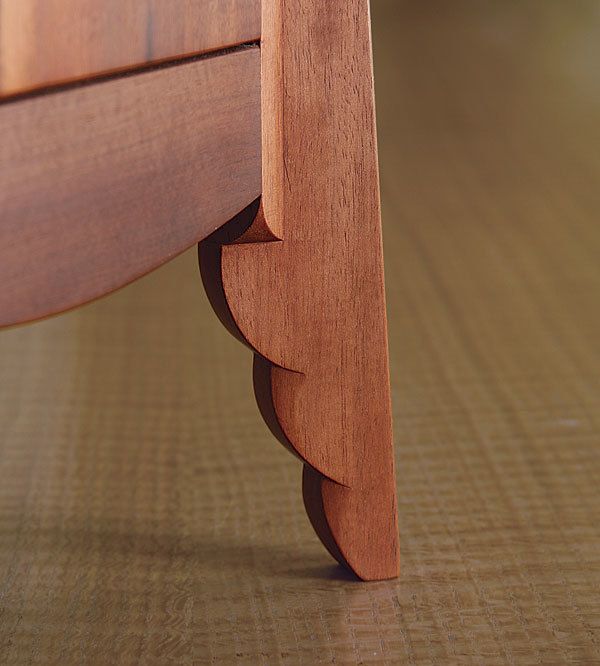The Gilpinoid Leg
Adaptable furniture leg gives casework the distinctive mark of its maker
Synopsis: Designed originally to relieve some of the sharp edges on his furniture and make it more toddler-friendly, this leg has become a favorite of Hank Gilpin’s. The leg combines a traditional square post with a fin-like projection on the outer corner that can be rounded off. It functions like a square leg, but opens the door to lots of design options: a tapered fin, a turret corner, and more. Gilpin shapes his leg from solid wood to guarantee continuity of grain and color.
One day long ago, while designing a desk, I watched my very energetic 2-year-old son racing through the house, his head at tabletop level. The furniture suddenly seemed to be bristling with pointy corners and sharp edges, each one of them inviting him to a perilous head-meets-corner moment. The potential for serious bruising got me thinking, and before long I had designed a leg for the desk that combined a traditional square post with a fin-like projection on the outer corner that I could round off to eliminate the sharp angle. The section of the new leg was an odd shape—I believe the geometric term for it is the seven-sided Gilpinoid. Structurally, the leg functioned just like a plain square leg, but the fin gave me all sorts of decorative options.
I realized I could taper the fin so it projected less at the top than at the bottom, giving the leg a bit of a graceful lift and leaving enough width at the bottom to make a shapely, scalloped foot. Where the desktop projected over the top of the leg, I designed a turret corner, which echoed the shape of the leg while eliminating more head-whacking right angles.
My first thought was to glue up the finned leg from two or three smaller pieces. But in the end I chose to cut it entirely from a single thick blank. A bit wasteful, perhaps, but a cool way to make a complex shape, working by subtraction like a sculptor with a block of marble. I do like to create interesting shapes that make you wonder, “How was this made?” Making it this way also results in perfect continuity of grain and color.
The leg worked well on the desk, so I used it on a cabinet. And another. Then another. My son is 30 now. In the years since he learned to maneuver safely around furniture, I’ve used the leg on scores of pieces, everything from diminutive jewelry boxes to 8-ft.-tall armoires.
For the full article, download the PDF below:
Fine Woodworking Recommended Products

Blum Drawer Front Adjuster Marking Template

Sketchup Class

Drafting Tools






















Comments
What a fabulous look and even better safety feature. I can even see this as a great safety feature for older adults, elderly people who often grab furniture to steady themselves. My 89 year old father has hurt himself accidentally pulling furniture over on himself more than once and I probably will as well before it's all said and done.
Log in or create an account to post a comment.
Sign up Log in